Embracing the captivating world of saddleseat riding offers enthusiasts and hobbyists an opportunity to develop their equestrian skills in a highly rewarding discipline. Saddleseat riding combines grace, agility, and showmanship as riders exhibit the aptitude of American Saddlebred horses through precise gaits and elegant presentation. This enriching journey provides ample scope for skill enhancement, from mastering the basics to refining advanced techniques, as one delves deep into the intricacies of horse-rider communication and elaborate showmanship.
Table of Contents (Horspedia)
Saddleseat Riding Basics
Saddleseat riding is a unique equestrian discipline that has its origins in the United States during the 18th century. It was first developed to showcase the high-stepping gaits and animation of gaited horse breeds, such as the American Saddlebred, Tennessee Walking Horse, and Arabian. This style of riding emphasizes the horse’s athleticism, performance, and elegant appearance while remaining comfortable and balanced for the rider. Unlike other disciplines, such as dressage or jumping, the focus in saddleseat is on the showiness and brilliance of the horse’s natural gaits rather than the rider’s skill and finesse.One of the key components of saddleseat riding is the specialized saddles and equipment used. Saddleseat saddles are designed to be lightweight and flat to allow for a close contact feel between the rider and the horse…The attire and turnout for both horse and rider in saddleseat are also distinct from other equestrian disciplines. Riders wear a conservative yet stylish outfit, usually consisting of a fitted suit, a bow tie or stock tie, gloves, tall boots, and a derby or fedora for headwear…Saddleseat riding requires a specific set of skills and techniques that set it apart from other disciplines…Saddleseat riding is an equestrian discipline that places great emphasis on both the horse’s performance, conformation, and presentation, and the rider’s skill and horsemanship. Classes in competitions may be divided by breed or age group, involving performances such as rail work, pattern work, and showmanship. Riders often practice and compete in both rail and pattern classes to increase their versatility and exposure to various riding situations. Ultimately, both horse and rider must work together to create a seamless display of grace, athleticism, and showmanship that exemplifies the saddleseat riding discipline.
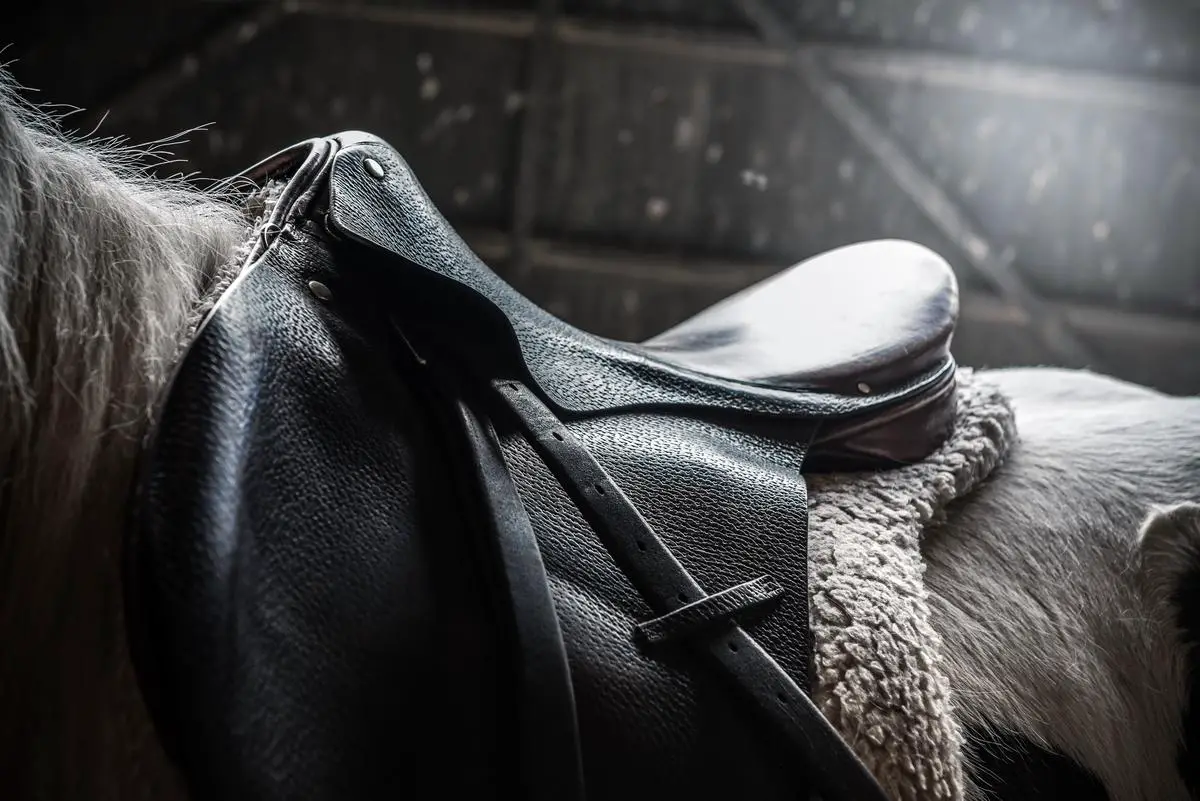
Understanding Saddlebred Horses
American Saddlebred horses, with their rich history rooted in American culture, are predominantly used for saddleseat riding. Originating in Kentucky, these horses were bred as versatile and stylish mounts that gained prominence in the late 1800s and early 1900s. Descended from Thoroughbreds, Morgans, and Narragansett Pacers, their impressive pedigree contributes to their unique characteristics. Known for their outstanding athleticism, they exhibit naturally high-stepping gaits and a showy appearance, making them perfect saddleseat mounts. Intelligent, responsive, and friendly, these horses have a strong work ethic that complements the demands of the discipline. When choosing a saddleseat mount, it is vital to consider the specific qualities necessary for success in this sport. American Saddlebreds often possess these qualities, such as flashy gaits, arched necks, and effortless animation. Factors like strength, agility, confidence, and a willingness to learn also contribute to their suitability for saddleseat riding. Finally, evaluating the horse’s conformation and soundness is essential for ensuring the horse can perform the required high-stepping gaits and intricate maneuvers without risking injury or strain. A well-rounded assessment of a prospective saddlebed horse will increase the chances of finding an ideal partner that thrives in the elegant and thrilling world of saddleseat riding.
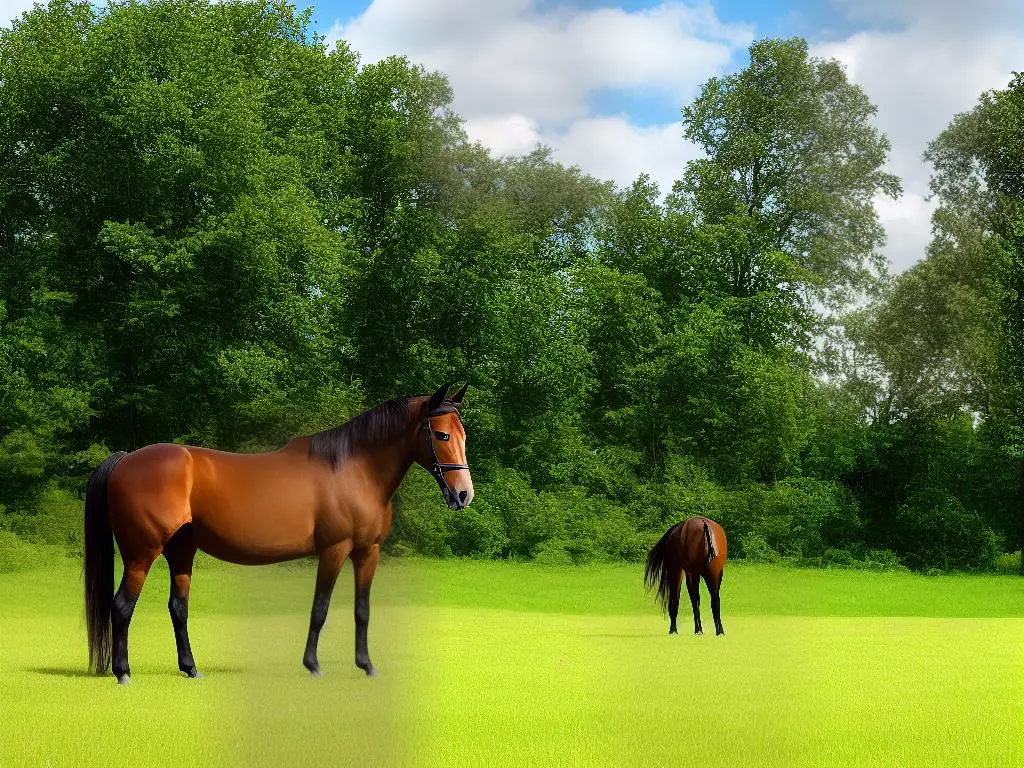
Rider Position & Balance
To become a skilled saddle seat rider, it is essential to master the correct rider position and balance. A well-balanced rider not only provides clearer cues to the horse but also ensures that both rider and horse move in harmony. Body alignment is foundational to proper rider position in saddle seat riding. Riders should maintain an upright posture with shoulders square and aligned with hips and heels. This famous ear, shoulder, hip, and heel alignment applies to all riding styles, including saddle seat riding. Proper alignment helps riders stay balanced and maintain clear communication with their horse. When selecting the right horse for saddleseat riding, considering the horse’s conformation, soundness, and history in the discipline is crucial. By doing so, riders can optimize their chances of finding a suitable mount that will excel in the exciting and elegant world of saddleseat riding.Leg positioning also plays a significant role in achieving an ideal saddle seat riding position. The rider’s legs should be relaxed and allow the thighs and knees to gently grip the horse’s sides. In saddle seat riding, the stirrups tend to be shorter when compared to other riding disciplines. The rider’s feet should rest softly in the stirrups, and the heels should be down to aid in maintaining balance. Keeping the heels down allows better absorption of the horse’s movement and enables easier adjustment of one’s balance in response to the horse’s movements.Rein handling is another critical aspect of rider position and balance in saddle seat riding. The rider must maintain constant but gentle contact with the horse’s mouth through the reins. Holding the rein with a slight bend in the wrist helps transmit more precise cues and maintain communication with the horse. Managing and adjusting the length of the reins as needed is also essential to control and direct the horse effectively. The rider should focus on riding with subtle cues, avoiding distraction from the horse’s natural movement.Staying in tune with the horse’s movement is of utmost importance in mastering rider position and balance. As a saddle seat rider, you must pay attention to the horse’s stride and the rhythm of their gait to stay in harmony with their movement. This will enable you to give clearer and more effective cues, resulting in a seamless and enjoyable riding experience. It is crucial to develop a strong sense of feel and understanding of the horse’s movement in order to obtain the seamless connection and communication required in saddle seat riding.Lastly, the seat is an integral part of rider position and balance, particularly in saddle seat riding. The rider should sit deep and centered in the saddle, with their weight distributed evenly over the seat bones. The rider’s back should be relaxed yet strong, allowing flexibility in response to the horse’s movement. By maintaining a close and soft seat, the rider can feel the horse’s motion beneath them and respond accordingly, ensuring a harmonious and synchronized ride. Clear communication and an understanding seat are the preeminent keys to attaining a solid foundation in saddle seat riding.
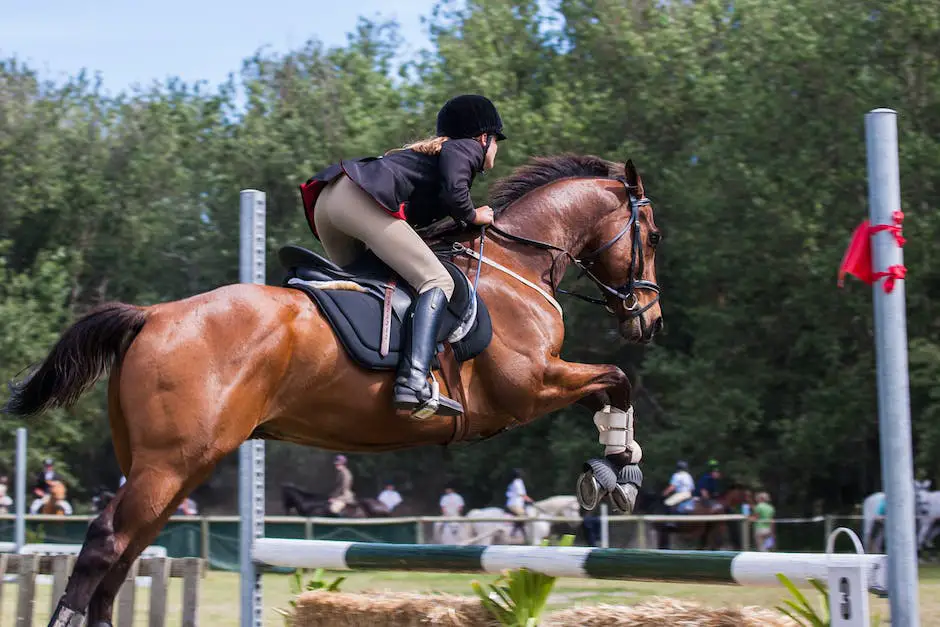
Developing the Saddleseat Gait
Building upon that strong foundation, mastering the various gaits specific to this discipline is essential for becoming highly skilled in Saddleseat riding. The walk, trot, slow gait, and canter each have their own unique characteristics and purpose within Saddleseat riding. Gaining a thorough understanding of these gaits and how to develop them in a Saddleseat horse is crucial to achieving excellence in this discipline.
Development of Walk
Developing the walk is the foundation upon which all other gaits are built. It is important to establish a relaxed yet energetic walk that maintains a steady rhythm. When practicing, encourage your horse to stretch its neck slightly outward while maintaining a collected frame. This will help the horse to engage its hindquarters and build the necessary strength for the other gaits. To further develop the walk, work on controlling the pace using your seat, legs, and hands to maintain a steady tempo. This will lead to a more confident horse that responds well to your cues.
Development of Trot
The trot is another essential gait in Saddleseat riding, and it requires a focus on balance and rhythm. To create a forward and fluid trot, encourage your horse to lift its shoulders and engage its hindquarters. This can be achieved through the use of circles, serpentines, and other schooling patterns to get your horse accustomed to moving in a balanced manner. Additionally, performing transitions between the halt, walk, and trot will help to establish balance and control over your horse’s movement.
Development of Slow Gait
The slow gait is a hallmark of Saddleseat riding and is a collected four-beat gait that is characterized by cadence and fluidity. To develop this gait, begin by establishing a good foundation with the walk and trot. Once your horse understands the concept of collection, ask for the slow gait by applying pressure with your legs, while maintaining light contact with the horse’s mouth. As your horse begins to move into the slow gait, ensure they maintain an even rhythm by adjusting your seat, leg, and hand cues as needed. Practice this gait on straight lines, circles, and serpentines to help your horse build the necessary muscle strength and flexibility.
Development of Canter
The canter is the final gait to master in Saddleseat riding and, although it may seem similar to the canter in other riding disciplines, the Saddleseat canter should be slightly more collected and animated. To achieve this, ensure your horse is engaged in its hindquarters, while maintaining a light and forward contact with the bit. As your horse becomes more comfortable at the canter, work on performing transitions between each gait to reinforce the distinction between the collected canter and the other gaits. Incorporating ground poles or cavaletti can help to improve your horse’s athleticism and develop a more balanced canter.
Embarking on the exciting and rewarding journey of Saddleseat riding is a fantastic opportunity for both horse and rider to develop unique gaits. By focusing on the development of each gait and practicing with purpose, enthusiasts can unlock the full potential of their horses and achieve their Saddleseat riding goals.

Saddleseat Showmanship
Saddleseat Showmanship Overview
Saddleseat showmanship takes this equestrian discipline to a new level, requiring riders to be not only skilled in the saddle but also to possess a certain panache and charisma while on horseback. In this engaging and competitive arena, riders’ abilities and their horses’ performance are continuously assessed.
Judges evaluate a combination of the rider’s skill, the horse’s performance, and the overall presentation of the horse and rider together. Proper saddleseat attire and grooming are essential components for success in saddleseat showmanship.
Saddleseat Show Classes
To succeed in this stylish discipline, riders must present themselves in traditional saddleseat attire, which includes a suit, vest, tie, and formal hat or helmet, as well as adhere to the specific etiquette standards set by the competition.
Typical classes in the competition include equitation, pleasure, and performance, with each having its own distinct set of rules and expectations.
Saddleseat Show Attire and Grooming
Proper saddleseat attire and grooming are essential components of saddleseat showmanship.
Riders must don a tailored suit, a collared shirt, a coordinating vest and tie, jodhpur pants, polished boots, and a formal hat or ASTM/SEI-approved helmet.
Horses, too, must be impeccably groomed and outfitted, with manes and tails neatly braided if it is breed appropriate to do so, and their hooves polished.
Etiquette in the Show Ring
Etiquette in the show ring is another vital aspect of saddleseat showmanship.
Riders must always maintain a sense of sportsmanship and professionalism towards fellow competitors, judges, and audience members.
This includes acknowledging the judge with a nod or a smile upon entering and exiting the ring, being respectful to other riders by keeping a safe distance between horses, and promptly following the instructions of the announcer.
Mental and Physical Conditioning
The journey to becoming a skilled saddleseat rider starts with understanding the mental and physical conditioning required for both horse and rider in this equestrian discipline.
To excel, riders must focus on two key elements: developing core strength that allows for stability in the saddle, and refining their show-ring strategy.
Effective strategizing involves anticipating each aspect of the competition, from highlighting the horse’s unique strengths to determining the best course to showcase fluid gaits and seamless transitions.
With consistent practice and attentive preparation, saddleseat riders can make a memorable impression on judges and spectators alike.
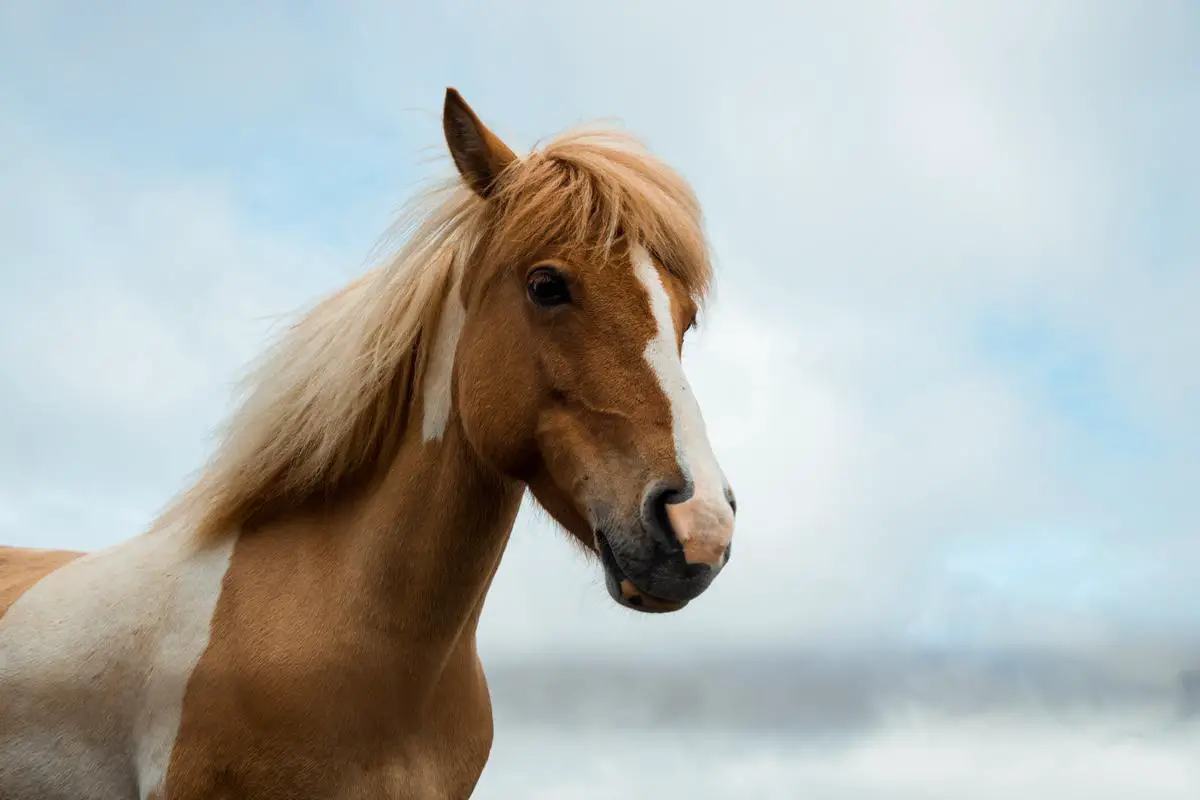
Photo by siljemidt on Unsplash
Saddleseat Training & Conditioning
Embarking on a saddleseat training and conditioning program for both horse and rider is the next essential step towards success in this realm. Such programs enable riders to build on their foundational skills and improve their overall stamina, while also ensuring that their equine partners are conditioned to perform at their peak throughout each competition.
To begin with, it is crucial for the rider to establish a strong foundation in the basic riding principles, such as maintaining correct posture, balance, and communication with the horse. This can be achieved through regular riding lessons and practice, focusing on developing the rider’s core strength and flexibility. Additionally, it is crucial to familiarize oneself with the specific requirements and expectations for saddleseat riding, which may vary from other equestrian disciplines.
.
One of the main aspects of saddleseat training is training and conditioning the horse to perform specific movements and showcase the desired qualities for this discipline, such as a high-stepping gait and an animated, showy presence. This can be achieved through consistent, targeted schooling sessions that focus on developing the horse’s strength, balance, and flexibility. While working with a professional trainer or instructor is highly recommended, some useful exercises for horse conditioning include transitions between gaits, collection, and extension, as well as lateral movements and hill work. It is essential to gradually build the horse’s fitness and stamina, and ensure that the workload is appropriate for its age and level of training.
Besides the physical conditioning, saddleseat training also involves a significant focus on the mental and emotional well-being of the horse and rider. It is essential for the rider to develop a strong bond with their horse and establish a positive, trusting relationship. This may include spending time grooming and caring for the horse, as well as incorporating relaxation techniques, such as deep breathing and visualization, to help manage nerves during competitions. For the horse, ensuring that their overall well-being is prioritized throughout the training process is vital. This includes addressing any medical or behavioral concerns promptly, evaluating the appropriateness of the horse’s diet and supplements, and allowing adequate rest days to prevent burnout and injury.
Another critical aspect of saddleseat training and conditioning is the preparation for competitions, which includes fine-tuning both horse and rider performances. This may involve practicing specific patterns and movements that will be required in competition, as well as dress rehearsals to simulate the show ring environment. Competing in schooling shows or attending clinics can provide valuable feedback and experience for the saddleseat rider, while helping to build confidence and refine their skills.
Focusing on the fundamentals of saddleseat riding is crucial for enthusiasts and hobbyists to become skilled in this discipline. This involves addressing common challenges such as balance issues, effective communication with the horse through the use of aids, and managing performance anxiety. By consistently practicing and committing to continuous education in saddleseat riding, riders can overcome these challenges and excel in their endeavors.
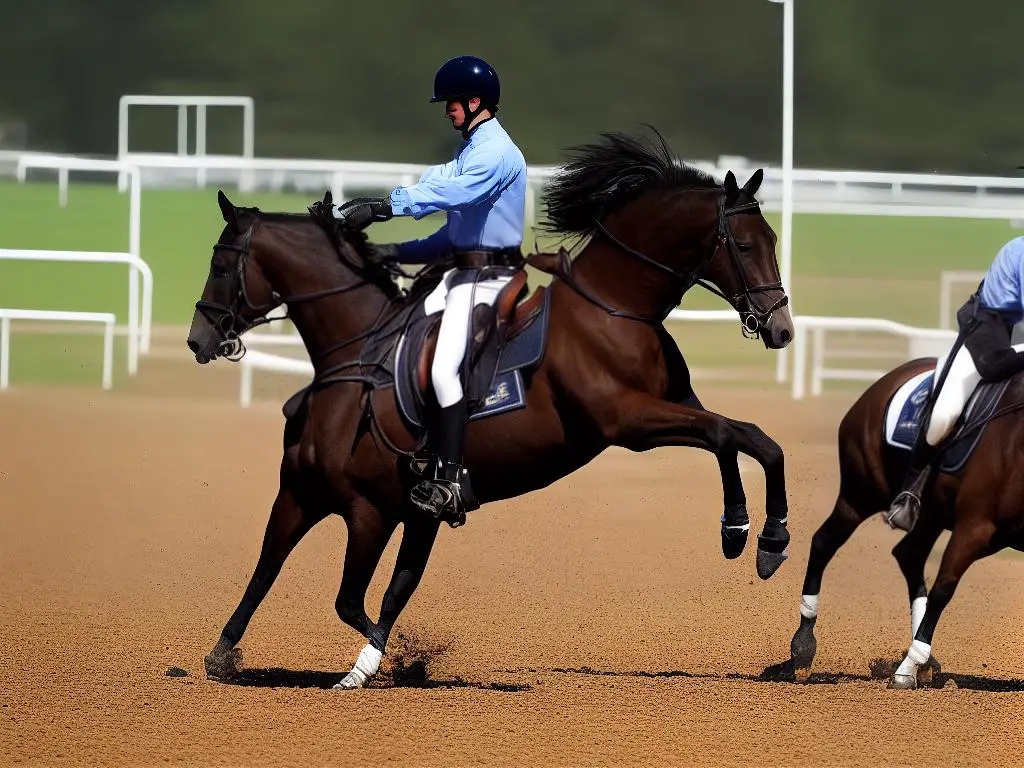
Advanced Saddleseat Techniques
As riders progress, it becomes essential for them to focus on executing complex patterns, which are critical to succeeding in saddleseat riding. These patterns can include a variety of moves, such as serpentines, figure 8s, and pivots, among others. Riding these intricate patterns requires seamless communication between the horse and rider, as well as precise execution of aids to guide the horse. Regular practice not only helps in perfecting the execution of these patterns but also assists in developing a strong bond between horse and rider, allowing them to move together effortlessly during a performance.
Fine-tuning transitions is another critical aspect of advanced saddleseat riding. This refers not only to the major transitions between gaits but also minor adjustments in the horse’s rhythm, pace, and balance within each gait. Advanced riders must be able to make accurate and smooth transitions, maintaining the correct position, and balance throughout. This requires a high level of skill, attentiveness, and understanding of the horse’s gaits and movements. Riders must always be in tune with their mount’s responsiveness, ensuring a poised, collected, and fluid performance.To truly excel in saddleseat riding, riders must pay utmost attention to perfecting their overall performance. This involves combining the knowledge of saddle seat equitation – i.e., the correct body position, posture, and use of aids – with showmanship and presentation. Riders must develop a strong presence and exhibit confidence in their riding, ensuring that they command attention in the show ring. This includes wearing proper attire, making sure the horse is well-groomed and conditioned, and riding with grace, fluidity, and poise. By attending to every detail, advanced saddleseat riders can create a stunning and polished overall impression that sets them apart in the discipline.The world of equitation plays a significant role in refining the rider’s skills, both in saddleseat riding and in other disciplines. Equitation refers to a rider’s ability to affect their horse’s performance through their position, aids, and use of the hands, seat, and legs. Advanced saddleseat riders should dedicate time to honing their equitation, focusing on elements such as alignment, balance, and flexibility. Strong equitation skills not only improve performance but also contribute to the rider’s safety, comfort, and overall enjoyment of the discipline.To become a standout saddleseat rider, it’s important to immerse oneself in the discipline, seeking advice from experts, participating in clinics or workshops, and watching other skilled riders. Observing professional riding performances, both live and recorded, is an excellent way to learn advanced techniques, identify areas for improvement, and develop a deeper understanding of the movements, subtleties, and nuances of saddleseat riding. It is also essential to find a skilled instructor who can guide you in your journey and help you reach your full potential as a saddleseat rider.
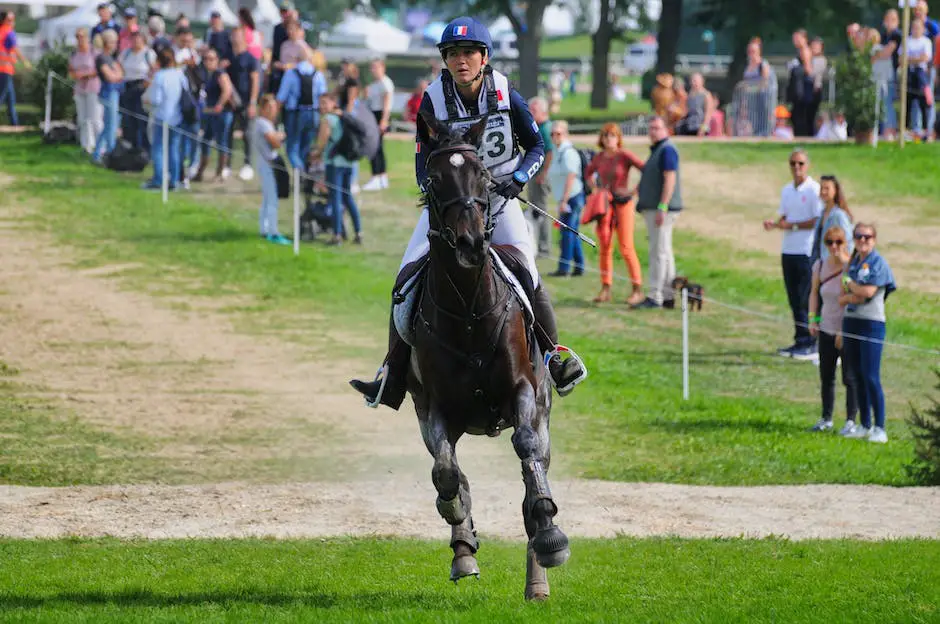
Ultimately, the multi-faceted discipline of saddleseat riding presents endless avenues for growth, learning, and accomplishment. As riders persistently polish their skills and knowledge, they form an unbreakable bond with their equine partners, fueled by mutual understanding and respect. This comprehensive guide serves as a stepping stone into the vibrant world of saddleseat, propelling enthusiast riders towards the gratifying experience of equestrian excellence and breathtaking showmanship.
